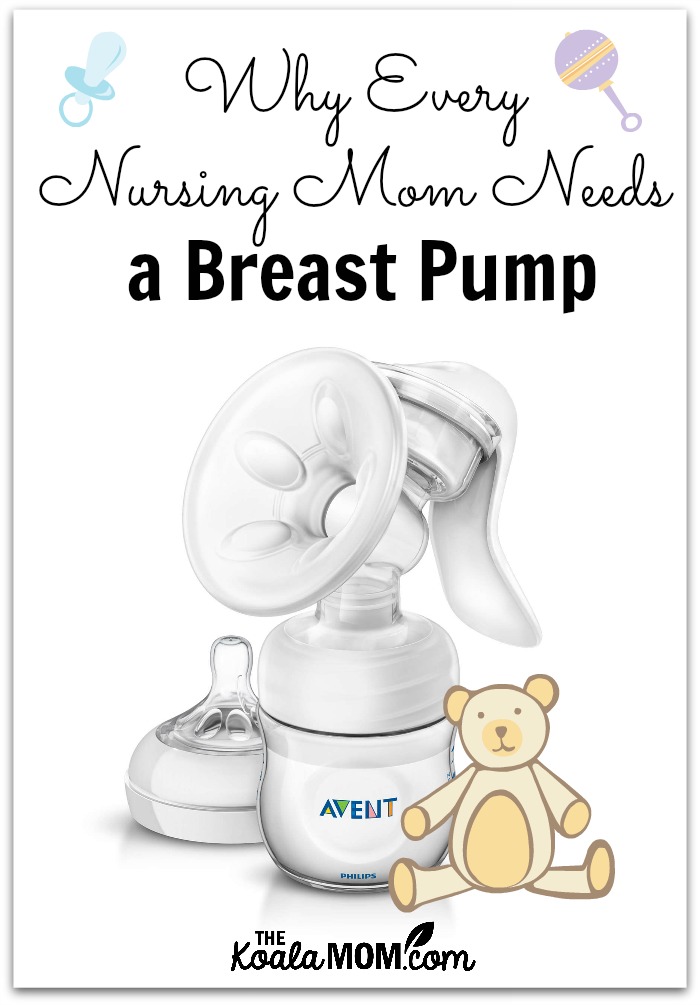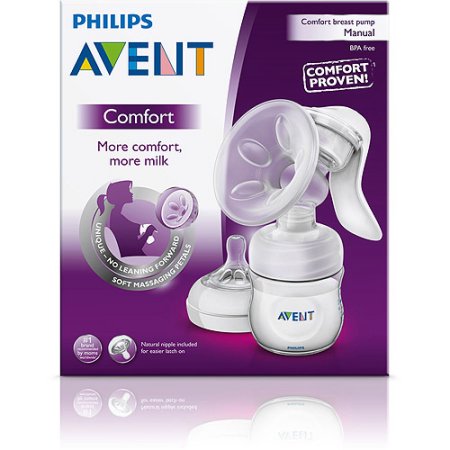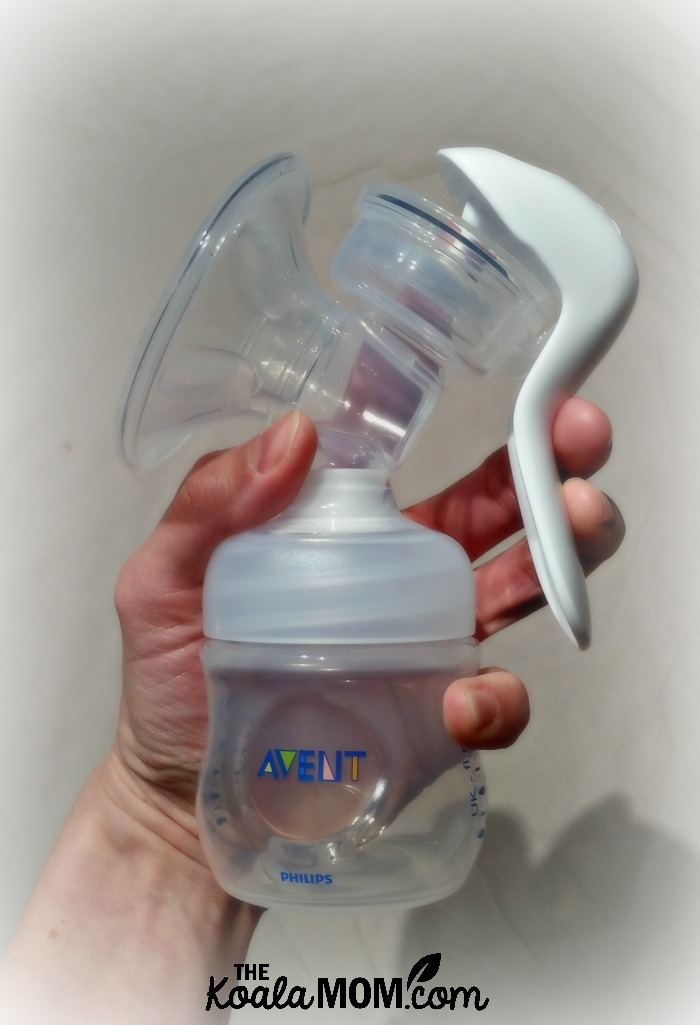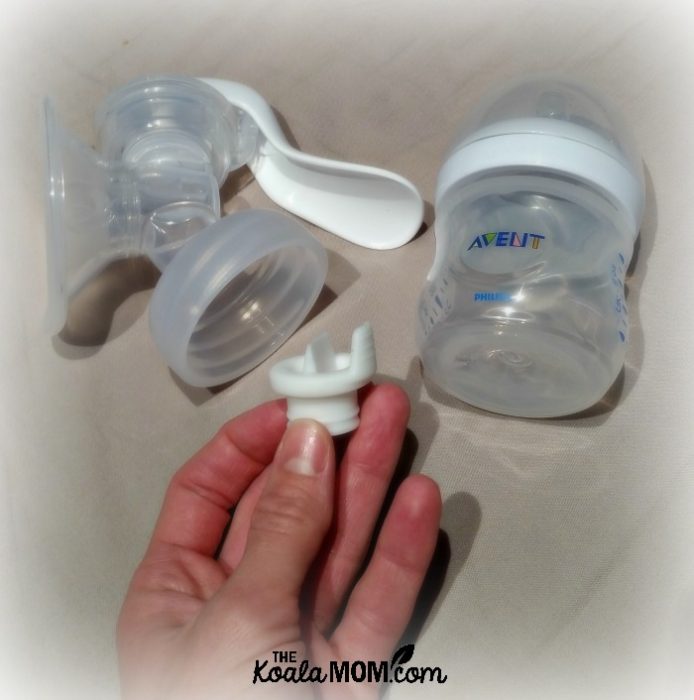Before Sunshine was born, I was happy to have recommendations from friends and family members about what we’d need for a new baby. One of those recommendations came from my sister-in-law, who said I’d need a breast pump. Even though I was planning to breastfeed, I bought myself Philips Avent Pump she suggested. I’m so glad I did. Here’s why, even if you are planning to exclusively breastfeed, you should also have a breast pump.

Disclosure: I partnered with Philips Avent and PTPA and received product and compensation for this post. All opinions expressed are my own. This post also contains affiliate links.
Pumping Reduces the Pain of Engorgement
After Lily was born, I had horrible engorgement. My breasts felt like two cabbages—hard and heavy. Poor Lily could barely manage to latch. When she did, my milk came so fast she started choking and coughing. Not only did my breasts ache, my entire back was sore as well from the weight on my chest. All the breastfeeding books say don’t pump during the stage, but nothing else was helping.
One night, in desperation, I pumped. I pumped enough that I was comfortable and Lily could nurse. Then I popped a Tylenol for my back pain and went to bed. I had to pump one more time before my breasts adjusted their supply to Lily’s demand. The relief I experienced those two times were worth the cost of the pump.
If you are also a big-breasted woman, you may face extreme engorgement. Having a pump on hand can be a lifesaver, though I recommend using it carefully. I certainly didn’t want my body to think it needed to produce more milk! However, it did help me get rid of some excess milk during that period of adjustment.
Pumping Allows You to Travel in Comfort
When both Lily and Jade were about a year old, I went away for a weekend without them. They were, at that point, old enough to eat and drink on their own, but still breastfeeding. I wasn’t worried about how they’d fare without me; I was worried about how I’d fare without them!
I packed my breast pump with me on both trips. Thankfully, the Philips Avent pump is small and easy to pack. Morning and evening, I’d duck into my hotel bathroom and pump for a few minutes. I pumped and dumped, so I wasn’t worried about sanitizing. That was enough to keep me comfortable while being away from my baby. When I got home, both girls started breastfeeding again and kept nursing for several more months.
More Reasons to Have a Breast Pump While Breastfeeding
One of my friends in Victoria breastfed her own sons while also pumping enough milk to donate to the milk bank. Like me, she had tons of milk. She had a system and schedule that let her pump and feed at the same time. Because I know the benefits of breast milk over formula, I admired her doing this for new moms who weren’t able to breastfeed (for whatever reason). If you also have lots of milk, you may want to look into the milk bank in your city.
 Another friend of mine ended up with nipple damage on one side. She’d pump that side and save the milk for her husband to take a turn feeding the baby. Then she’d breastfeed the baby on the other side. Pumping let them keep up a breastfeeding relationship and get Dad involved as well. Eventually, her nipple healed and she was able to pump or feed by choice.
Another friend of mine ended up with nipple damage on one side. She’d pump that side and save the milk for her husband to take a turn feeding the baby. Then she’d breastfeed the baby on the other side. Pumping let them keep up a breastfeeding relationship and get Dad involved as well. Eventually, her nipple healed and she was able to pump or feed by choice.
Another reason to pump can be having an emergency supply of milk. After Pearl’s birth, I pumped quite a bit. I have known breastfeeding moms who have ended up in the hospital and then had to either have the baby come to them (if possible) or start the baby on formula. Worst-case scenario, I had a couple days’ of milk for Pearl if she needed it.
Of course, many of us hope that pumping will allow us some measure of freedom while nursing. Maybe Dad or Grandma can feed baby so Mom can sleep more or go out for a bit. That hasn’t worked for me. None of my girls have taken to a bottle, though I’ve tried with each of them to pump and bottle feed.
After Pearl’s birth, my older daughters thought it was great fun to give her a bottle. They begged me to pump so they could feed the baby. However, after Pearl drank her first bottle of breastmilk, she refused any more, like all of her sisters. So any thought of leaving baby and a bottle with a sitter disappeared.
Choosing the Right Breast Pump
I’ll be honest: I don’t like pumping. I do it when necessary (as mentioned above), and that’s it. Having said that, I’m still glad I’ve had my breast pump when I needed it. If you are expecting to only use a breast pump occasionally, as I did, then the Philips Avent manual pump is a great solution. It’s small and easy to assemble, clean and store.
I had a Philips Avent manual pump with my first three daughters. My friend who pumped for the milk bank actually had the same pump. Once, the small seal on her pump broke. While she waited for it to come in the mail, I gave her the spare (new) seals from my pump. I love the fact that many of the parts on the pump are replaceable. I still have the bottles that came with my original pump, and recently replaced the nipples on them so Pearl could use them.
I received a new Philips Avent manual pump to try for this post. While it looks a lot like my first pump, it has some small modifications that make it work better. The small seal I always worried about losing (and often put in upside down) has been replaced by a larger, more effective seal. The massage cushion feels softer, and the slightly shorter bottle makes it more compact. It’s easy to use with one hand (once you’ve gotten it started), so you can read your favourite blogs or browse Pinterest while pumping.
The Philips Avent breast pump has won the PTPA Seal of Approval from other moms who’ve tried it and loved it. It is compatible with other Philips Avent bottles and cups. (I tested it on my bottles from my old pump set and yep, they still fit together!) The pump includes the natural bottle and nipple, so there’s less nipple confusion for babies who are breastfeeding and bottle feeding.
Disclosure: I am part of the PTPA Brand Ambassador Program with Philips Avent and I received compensation as part of my affiliation with this group. The opinions on this blog are my own.



6 Comments
I did have one and it helped so much with engorgement. Thanks for the giveaway!
I’ve used their manual pump and enjoy how easy it is to use. Using a breast pump makes life so much easier as a breast feeding mom because it allows for a bit of a break 😉
I agree! Glad it helped you get a break… that’s so important for moms! Take care of yourself so you can take care of baby. 🙂
I used a pump when breastfeeding, to get some milk for baby to drink when I’m out of the house. Found it very useful, a lot of work, but definitely do-able.
Having a pump was a lifesaver for us. When our first kid arrived, we were both grad students. Having a few bottles stored up allowed me, the dad, to feed Jr. when the mom was pulling all night shifts at the lab. It’s also nice to have a bottle in the freezer for emergencies.
Hamilton – that’s great to hear! I did keep the emergency stash, but I wish my husband could have done more of the feedings. Unfortunately, our picky babies didn’t allow that. 🙂 Glad it worked for you!